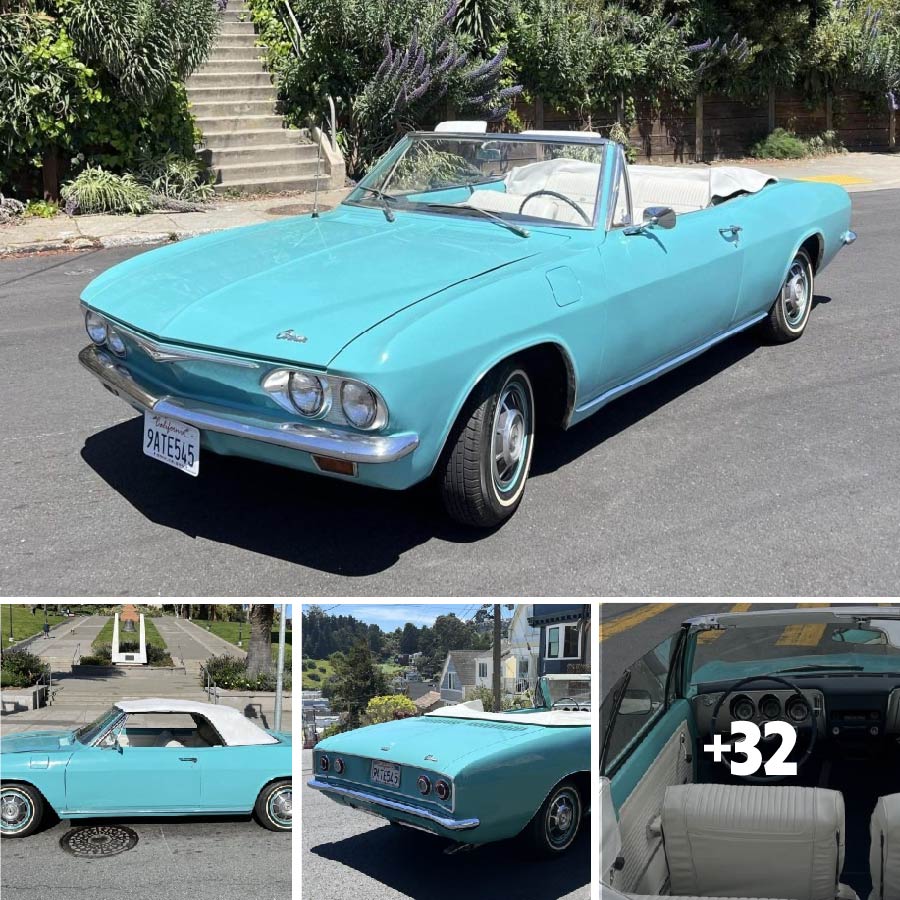
This 1965 Chevrolet Corvair Monza convertible, draped in a sapphire hue over alabaster vinyl, is propelled by a rear-fixed 164ci Turbo-Air flat-six engine, allied with a duo-speed Powerglide automatic transaxle. The vehicle boasts a porcelain convertible canopy, a harmonizing cover, 13-inch ferrous wheels adorned with octo-spoke caps, and anterior bucket seats. Acquired in 2022 by the current steward, the automobile underwent maintenance including the renewal of brake discs, conduits, both anterior and posterior wheel cylinders, and braking pads. This no-reserve Corvair Monza convertible is now proffered with an unblemished Californian title in the custodian’s appellation.

Originally clad in Sierra Tan (S), the vehicle received a cerulean repaint by a previous owner. The exterior showcases a white convertible top, quadruple illumination units fore and aft, lustrous fenders, and a gleaming exhaust tip. Notably, oxidation marks the rear quarter panels.

The 13-inch ferrous wheels, encased in eight-spoke covers, are shod with 175/80 Milestar tyres. The Corvair features an autonomous suspension architecture, with stopping capabilities provided by drum brakes at both ends. Recent refurbishments in 2023 included the replacement of brake discs, conduits, and wheel cylinders.

The cabin, featuring front bucket seats and a rear bench in white vinyl, includes such refinements as a secure glove compartment, shiny threshold plates, and a nicotian burner. Absences include the radio and kick panels, and the thermal unit and fan are non-operational.

A two-spoke helm circles a 120-mph speedometer and a petrol gauge. The odometer, five digits in breadth, registers 60k miles, of which approximately 735 have been accrued under the present ownership. The complete mileage remains indeterminate.

The stern-anchored, air-cooled 164ci Turbo-Air Special flat-six, equipped with twin single-barrel carburetors, was initially esteemed at 110 horsepower and 160 lb-ft of torque. The engine exhibits an oil seep and a lifter resonance in colder states.

Propulsion is directed to the posterior wheels through a duo-speed Powerglide automatic transaxle.
